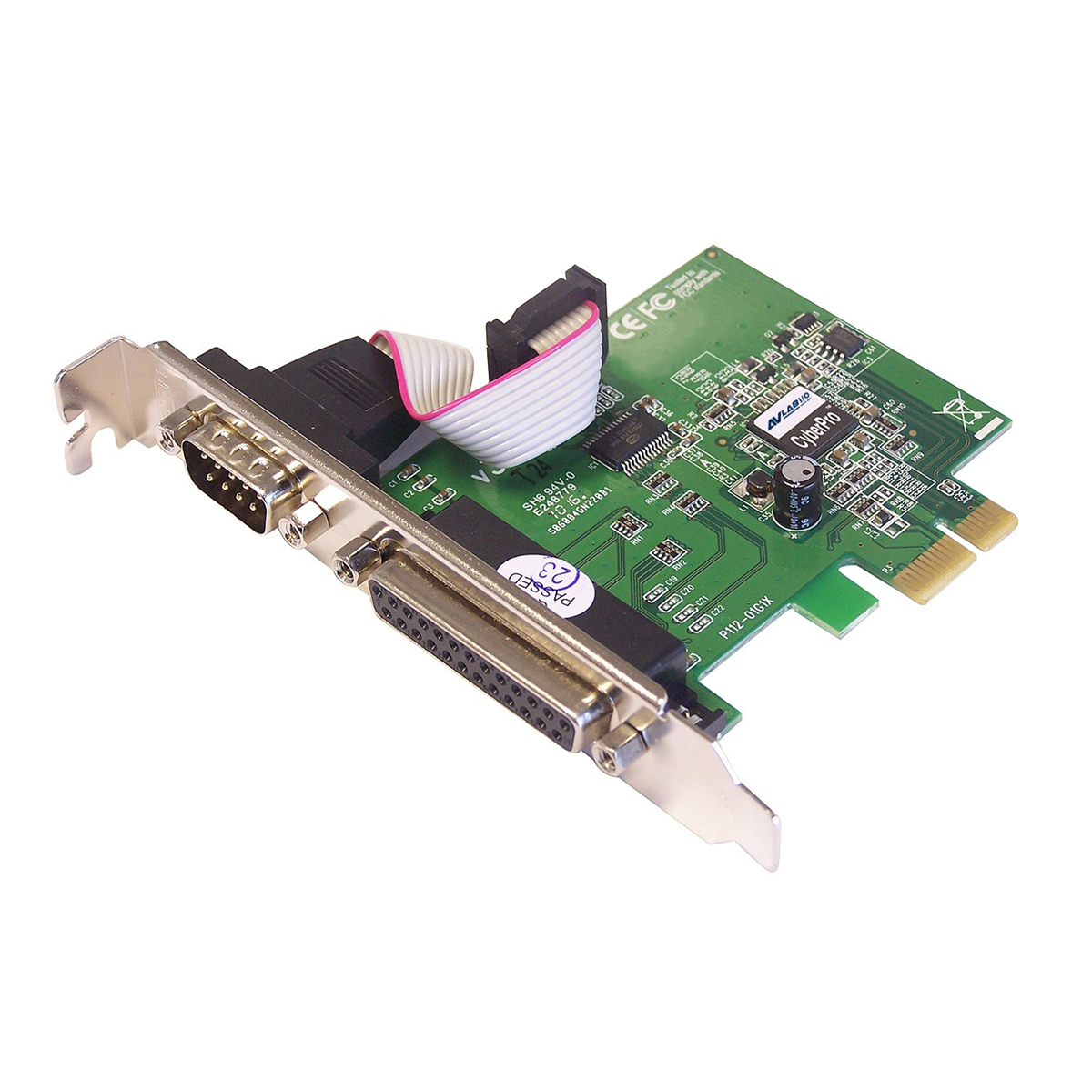- AVLAB-JJ19-1
- AVLAB 1S1P Combo PCIe Card, DB9 RS-232 921Kbps & DB25 Parallel ECP/EPP/SPP
■ PCI Express (PCIe) adapter with 1 high-speed 16950 UART serial (9-pin) and ECP/EPP parallel (DB25) port ■ Works as standard RS-232 port or with 5V or 12V power output for devices that require power (such as handheld scanners, table scanners, POS displays, etc.). Configurable via jumpers
Highlights
EXPANSION
PCI Express (PCIe) adapter with 1 high-speed 16950 UART serial (9-pin) and ECP/EPP parallel (DB25) port
WORKS WITH A STANDARD RS-232 PORT OR WITH A 5V/12V POWER OUTPUT
Works as either a standard RS-232 port or with a 5V/12V power output for devices that require power such as handheld scanners, table scanners, POS displays and many more
Specification
Chipset: Oxford OxPCIe952
Compliant with PCI Express Base Specification, Revision 1.1
Bus type: PCI Express x1
Ports:
■ Serial: 9-pin, Male, RS-232
■ Parallel: 25-pin, Female
4-layer PCB: separate layers for data and grounding. Greatly reduces signal noise and loss. Delivers more reliable high-speed data transfers
Onboard power connector to provide reliable power source for devices that require power
Serial port:
■ 9-pin, RS-232, 16950 UART
■ Built-in 128-Byte FIFO buffers
■ Asynchronous baud rates up to 15Mb/s
Parallel port:
■ Compliant with IEEE 1284-1994 parallel port standard
■ Supports ECP, EPP, SPP parallel port modes
Environmental conditions
■ Operating temperature: 32 to 122 degrees F (0 to 50 degrees C)
■ Operating humidity: 20% to 80% RH
■ Storage temperature: -4 to 140 degrees F (-20 to 60 degrees C)
■ Storage humidity: 10% to 90% RH
Certifications/Standards: FCC, CE, RoHS
Warranty: Lifetime limited
Country of origin: China
FAQ
- How do I confirm that Windows detects my expansion card?
- To confirm that Windows detects your expansion card, complete the following: Press the Windows key+R, type devmgmt.msc, and press Enter. In Device Manager, under the appropriate heading, confirm that your expansion card is listed and that there isn't an exclamation mark next to it. For example, a RS-422/485 controller card would be under Ports (COM & LPT)
- How do I confirm that Windows detects my USB device?
- To confirm that Windows detects your USB device, complete the following: Press the Windows key+R, type devmgmt.msc, and press Enter. In Device Manager, under the appropriate heading, confirm that your expansion card is listed and that there isn't an exclamation mark next to it. For example, a USB device would be under Universal Serial Bus controllers.
- How can I make sure my serial port is working in Windows?
- To check whether or not an RS-232 serial port is working, perform an RS-232 loopback test by doing the following: If your serial port is not female, convert it by taking a female/female cable or gender changer and plugging it into the serial port. Take a metal paperclip or wire and cross pins 2 and 3. If you look closely at the female end, the pins should be numbered. Open a telnet session on the COM port number of the device that you are testing. Note: To open a telnet session on the COM port, you need a telnet client like PuTTY or Hyper Terminal. Windows XP comes with Hyper Terminal. When the session is open, anything you type into it you should see. The loopback test fails when you cannot see what you are typing. If the loopback test fails, make sure that the serial cable or gender changer that you are using works and that the adapter is in the correct port.





